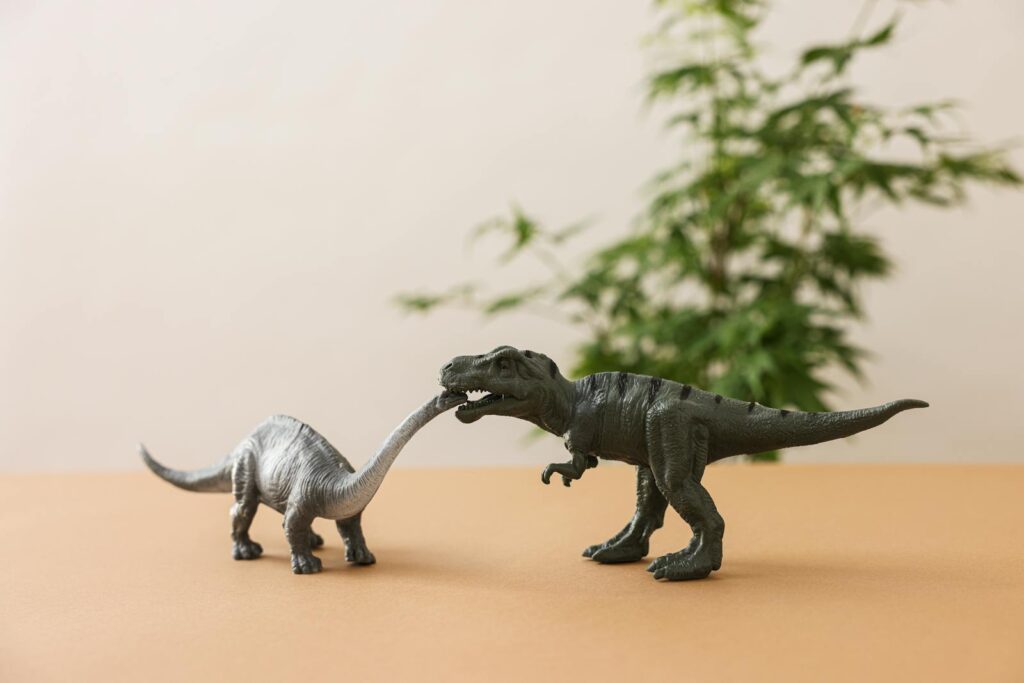When we gaze upon the fossilized remains of dinosaurs in museums, it’s easy to view them as merely ancient biological machines—creatures that walked, hunted, and reproduced without the complex emotional lives we associate with modern animals. However, recent paleontological discoveries and comparative studies with living dinosaur descendants have begun to challenge this perspective.
The question of whether dinosaurs could experience emotions like fear, affection, or grief isn’t just an exercise in scientific curiosity—it touches on our fundamental understanding of the evolution of cognition and social behavior in vertebrates. As we piece together evidence from bone beds, trackways, and brain cases, a more nuanced picture emerges of dinosaurs as potentially social creatures with richer inner lives than previously imagined.
The Brain Architecture of Dinosaurs

Understanding dinosaur emotions begins with examining what we know about their brain structure. Through endocasts—molds of the interior of fossil skulls—paleontologists have gained insights into dinosaur neuroanatomy. Particularly interesting is the cerebrum, which in mammals and birds processes emotions and social behaviors. Theropod dinosaurs, especially those closely related to birds, showed enlarged cerebrums relative to their brain size, suggesting the potential for more complex cognitive functions.
The discovery of dinosaurs like Tyrannosaurus rex having brain-to-body ratios comparable to some modern birds indicates neural complexity beyond basic instinctual responses. While their brains weren’t as proportionally large as those of mammals, certain dinosaur lineages possessed neural architecture potentially capable of processing basic emotional states—an essential foundation for social behavior.
The Evolutionary Context of Emotions

Emotions didn’t simply appear in humans or even mammals—they evolved gradually over hundreds of millions of years as adaptive responses to environmental challenges. Basic emotional states like fear, aggression, and possibly rudimentary forms of attachment exist throughout the vertebrate lineage, including in reptiles and birds. Since dinosaurs occupy an evolutionary position between these groups, they likely possessed at least fundamental emotional capabilities.
From an evolutionary standpoint, emotions serve crucial survival functions: fear triggers escape responses, aggression helps secure resources, and social bonding facilitates group living. Given dinosaurs’ evolutionary success spanning over 165 million years, they almost certainly possessed effective emotional systems driving adaptive behaviors, though these would differ from the complex emotional repertoire of mammals.
Evidence from Modern Dinosaur Descendants

Birds, the living descendants of theropod dinosaurs, offer compelling insights into possible dinosaur emotional lives. Modern birds display remarkable emotional complexity—crows show grief-like behaviors when fellow flock members die, parrots form deep bonds with specific individuals, and many species engage in elaborate social rituals.
Some birds, like ravens and magpies, even recognize themselves in mirrors, suggesting self-awareness. Crocodilians, the other living archosaur lineage closely related to dinosaurs, also display surprising behaviors, including maternal care and complex communication.
While we can’t directly extrapolate from modern animals to their extinct relatives, the emotional complexity observed in both major surviving archosaur lineages suggests their common ancestors—including many dinosaur groups—likely possessed the neurological foundations for basic emotions and social bonds.
Parental Care in Dinosaurs

One of the strongest lines of evidence for dinosaur emotional capacity comes from discoveries related to parental care. Multiple fossilized nests show adult dinosaurs died while brooding their eggs, suggesting dedication to offspring protection. The Mongolian oviraptorid Citipati osmolskae was discovered in a brooding position atop its nest, having apparently died protecting its eggs during a sandstorm. Maiasaura, whose name literally means “good mother lizard,” appears to have cared for its young in nests for extended periods based on the developmental stage of hatchlings found in nesting grounds.
This investment in offspring care requires, at minimum, reward mechanisms in the brain that reinforce such behaviors—the neurological basis for attachment and nurturing behaviors that feature prominently in many modern animals’ emotional lives. While we can’t determine if dinosaurs felt “love” as humans understand it, the evidence strongly suggests they possessed the neural circuitry for parent-offspring bonds.
Herding Behavior and Social Structures
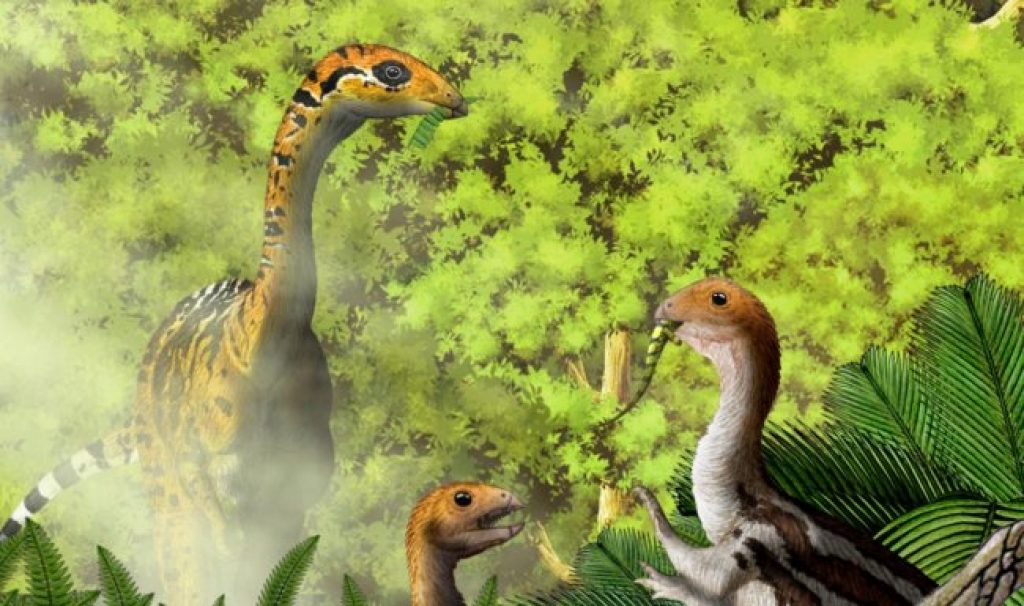
Extensive fossil discoveries of multi-individual assemblages provide compelling evidence that many dinosaur species lived in social groups. Massive bonebeds containing dozens or even hundreds of individuals of the same species, such as those of Edmontosaurus and Centrosaurus, suggest these animals traveled together in herds.
Trackway evidence further reinforces this, with multiple sets of footprints moving in the same direction and showing coordinated movements. Social living typically requires emotional capabilities that help maintain group cohesion—recognition of individuals, attachment to group members, and responsiveness to social signals.
The discovery of age-segregated herds in some species, with juveniles clustered together in “schools” while adults remained nearby, hints at complex social structures with specific roles based on developmental stage. These sophisticated arrangements suggest that dinosaurs possessed emotional systems capable of supporting long-term social bonds and hierarchical group structures.
Play Behavior in Young Dinosaurs
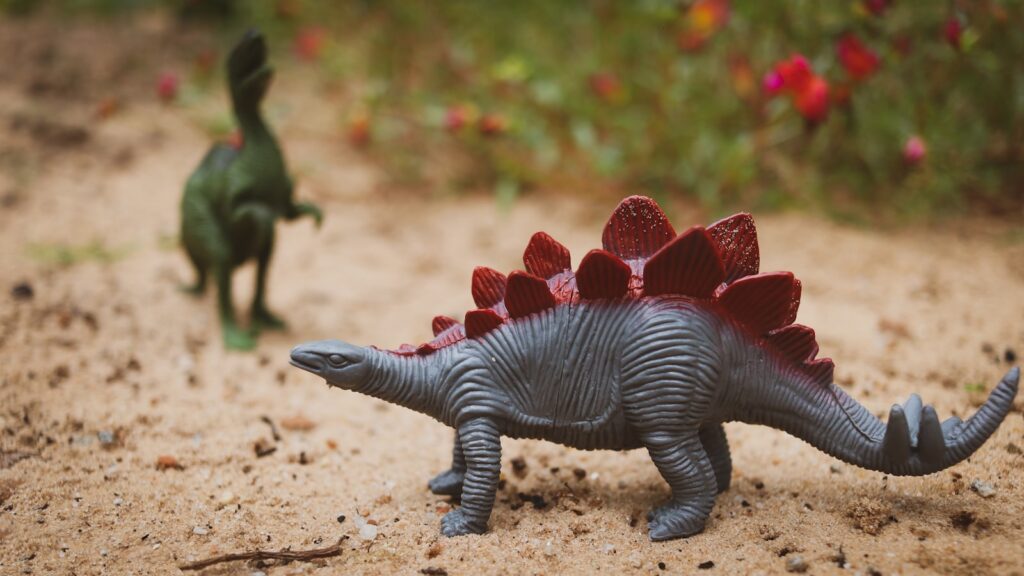
Play behavior, common in cognitively complex animals with extended juvenile periods, may have existed in certain dinosaur species. Young tyrannosaurs and other theropods show bone structures suggesting they were highly active, potentially engaging in playful activities that would develop hunting skills. Bite marks on some fossils of juvenile dinosaurs indicate non-lethal interactions that might represent play-fighting, similar to behavior observed in young predatory mammals today. The extended growth period of many dinosaur species would have provided ample opportunity for such developmental behaviors.
Play requires positive emotional reinforcement—essentially, it needs to feel good to motivate the behavior—suggesting dinosaurs capable of play would have experienced pleasure-like emotional states. Though speculative, the combination of extended juvenility and complex social structures in many dinosaur species creates conditions where play behavior would have been advantageous for developing physical and social skills.
Dinosaur Communication and Emotional Expression
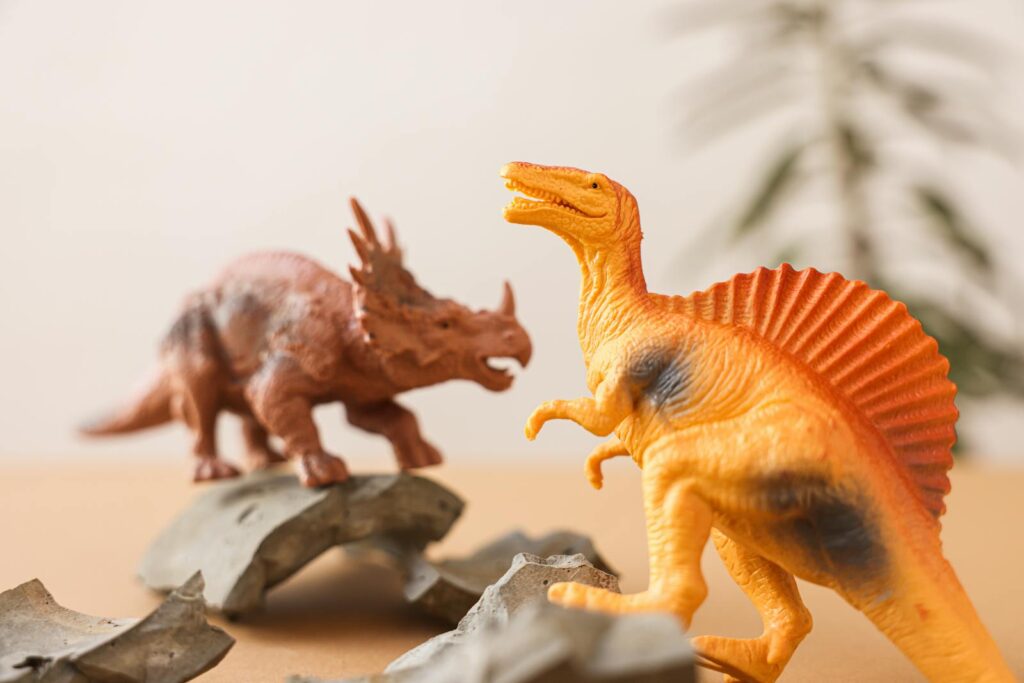
The elaborate cranial crests, frills, and display structures found in many dinosaur species suggest they communicated visually with conspecifics, potentially including emotional signaling. The hollow crests of lambeosaurines like Parasaurolophus could have produced resonant calls for long-distance communication, while the horns and frills of ceratopsians likely served as species recognition and dominance display structures.
Recent discoveries of specialized structures in the Liaoning dinosaur fossils indicate that some species possessed colorful feathers potentially used in displays similar to modern birds. Effective communication often requires emotional states to drive appropriate signaling—agitation, attraction, submission, or dominance—suggesting dinosaurs possessed emotional systems tied to their communication methods. The complex and energetically expensive nature of many dinosaur display structures indicates strong selection pressure for effective social and possibly emotional communication.
The Neurochemistry of Dinosaur Emotions

While we cannot directly measure the neurochemistry of extinct animals, comparative studies with living reptiles and birds suggest dinosaurs likely possessed similar emotional neurotransmitter systems. Neurotransmitters like dopamine, serotonin, and oxytocin—which regulate pleasure, mood, and bonding in modern vertebrates—have deep evolutionary roots predating the dinosaur lineage. The neural pathways governing emotion are remarkably conserved across vertebrates, suggesting dinosaurs would have utilized similar chemical signaling.
Brain regions associated with emotion in modern animals, such as the amygdala and hypothalamus, have homologues throughout the vertebrate lineage, including in reptiles and birds. Though dinosaur brains were structured differently from mammalian brains, they likely contained analogous systems for processing emotional stimuli, responding to threats, and reinforcing beneficial social behaviors through reward pathways.
Evidence from Pathological Specimens

Fossil specimens showing evidence of injury and healing provide indirect evidence of dinosaur emotional responsiveness. Numerous examples exist of dinosaurs that survived severe injuries, including broken bones, infections, and even cancer, suggesting they possessed pain responses and adaptive behaviors to cope with injuries. A famous Allosaurus specimen nicknamed “Big Al” lived with multiple injuries and infections that would have caused chronic pain, yet survived for an extended period.
The behavior of continuing to function despite injury requires neurological mechanisms to modulate pain and maintain motivation—systems intimately connected with emotional processing in modern animals. Additionally, the discovery of dinosaurs with disabilities that apparently lived into adulthood suggests possible social support from conspecifics, hinting at prosocial behaviors potentially driven by rudimentary forms of empathy or attachment.
Territoriality and Emotional Investment

Evidence suggests some dinosaur species defended territories or specific resources, behaviors typically associated with emotional investment in modern animals. Theropod dinosaurs like Majungasaurus appear to have maintained hunting territories based on the distribution of fossil remains, while nesting grounds of species like Maiasaura show regular spacing suggesting territorial behavior around nest sites. Dramatic fossil evidence from fighting dinosaurs, such as the famous Velociraptor and Protoceratops locked in combat at the moment of death, demonstrates the intensity of dinosaur confrontations.
Territorial behavior requires emotional drivers—the motivation to defend resources must be reinforced by neurological systems that create appropriate emotional states. The elaborate display structures of many dinosaurs, from ceratopsian frills to theropod feathers, likely served in territorial contests as intimidation displays before physical confrontation, suggesting dinosaurs experienced emotional states associated with territorial defense and dominance.
Sexual Selection and Emotional Drivers

The extreme ornaments found in many dinosaur species—from the elaborate crests of hadrosaurs to the massive frills of ceratopsians—suggest sexual selection played a major role in dinosaur evolution. Sexual selection typically involves emotional responses in choosing mates, as elaborate displays must trigger attraction or preference in potential partners. The discovery of sexually dimorphic structures in some dinosaur species, where males and females had different ornamental features, further supports this interpretation. These elaborate structures required significant resource investment to grow and maintain, indicating strong selective pressure from mate choice.
In modern animals, mate selection involves complex emotional responses, and the parallel structures in dinosaurs suggest similar neurological systems were at work. While we cannot know if dinosaurs experienced anything like “attraction” as humans understand it, the evidence strongly suggests they possessed emotional systems that reinforced mating preferences.
Limitations of the Fossil Record
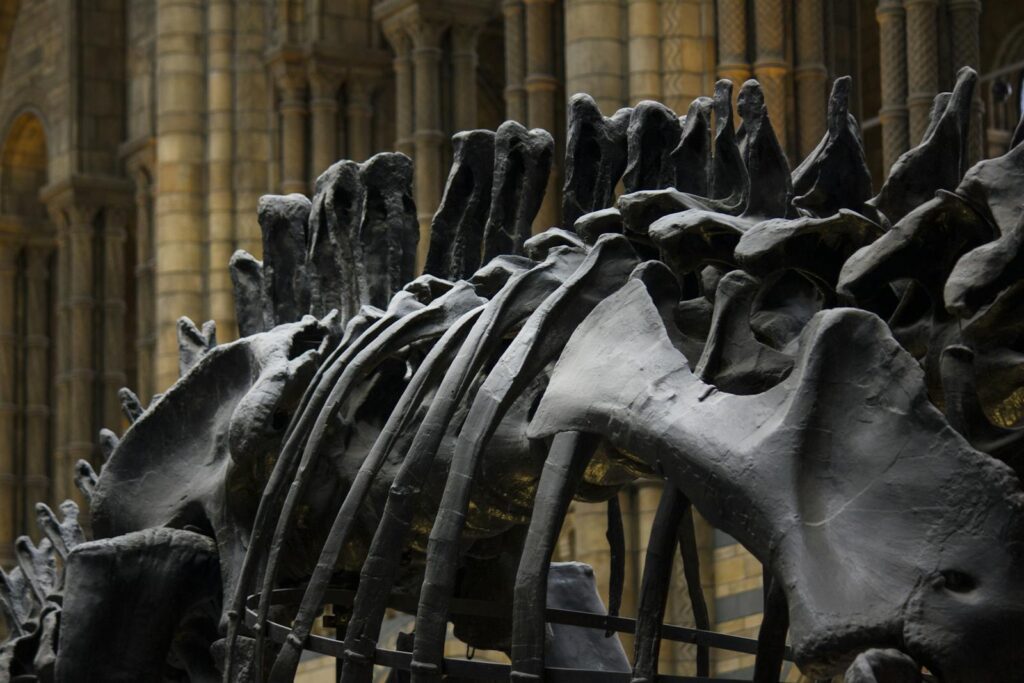
Despite the tantalizing evidence suggesting dinosaurs had emotional lives, significant limitations constrain our understanding. Behavior doesn’t fossilize directly—we can only infer it from physical remains and comparative studies with living relatives. The fossil record provides snapshots rather than continuous observations, making it difficult to study behavioral patterns that might indicate emotional states. Brain tissues are not preserved, so our knowledge of dinosaur neuroanatomy relies on endocasts that reveal only the gross structure of the brain, not its internal organization or functioning.
Additionally, the substantial evolutionary distance between dinosaurs and modern animals means we must be cautious about inferring specific emotional capabilities. The fragmentary nature of the fossil record also means our sample size for many behaviors is extremely limited, sometimes based on just a handful of specimens, making broader conclusions tentative at best.
Future Research Directions

Advancing our understanding of dinosaur emotions will require interdisciplinary approaches combining cutting-edge techniques from multiple fields. Improved CT scanning technology continues to reveal previously undetectable details in fossil endocasts, potentially offering new insights into brain regions associated with emotional processing.
Developmental studies of modern birds and reptiles can help identify the genetic foundations of emotional systems that may have existed in their dinosaur ancestors. Ongoing research into the neurobiology of living archosaurs (birds and crocodilians) creates more refined models for understanding their extinct relatives’ cognitive capabilities.
Advanced computer modeling may eventually allow researchers to simulate dinosaur neural networks based on brain size, shape, and comparative data from living relatives. Field discoveries of new fossil assemblages, particularly those preserving multiple individuals in behavioral contexts, will continue to provide crucial evidence about dinosaur social interactions potentially driven by emotional connections.
Conclusion

As our understanding of dinosaur biology, neurology, and behavior continues to evolve, so too does our appreciation for their potential emotional lives. While we may never know with certainty whether a Triceratops felt affection for its offspring or a Tyrannosaurus experienced something akin to the thrill of the hunt, the mounting evidence suggests dinosaurs were far more than mindless automatons. They likely possessed emotional capacities appropriate to their ecological niches and social structures—capacities that helped them thrive for over 165 million years.
This perspective not only enriches our understanding of these fascinating creatures but also highlights the deep evolutionary roots of emotion itself, reminding us that the capacity to feel isn’t uniquely human but rather a fundamental aspect of vertebrate neurobiology with ancient origins stretching back into the Mesozoic Era and beyond.

